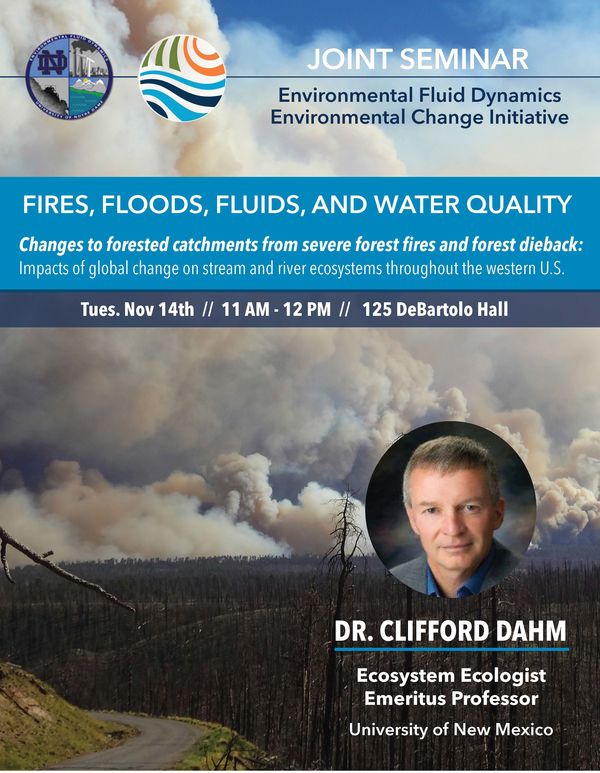ECI & EFD Joint Seminar: Clifford Dahm

Wildfire activity in the western United States increased abruptly in the mid-1980s and has continued to ramp up rapidly over the past two decades. Rising temperatures, earlier snowmelt, more rain and less snow, greater vapor pressure deficits in spring and autumn, forest dieback and increasing forest fire frequency and severity affect these forests. A catastrophic forest fire (Las Conchas fire) occurred in central New Mexico in June and July of 2011 burning 634 km2 with an estimated 46% of the fire being of severe or moderate intensity. Remote sensing was used to link precipitation events occurring in the burn scar to extreme water quality excursions observed in the Rio Grande downstream of the burned catchments. Charcoal, ash, and sediment was routed through intermittent streams and rivers into the Rio Grande after thunderstorms producing black water events. At four sites along the river, in situ sensors captured the responses of water temperature, specific conductance, turbidity, pH, and dissolved oxygen in late summer to these flood events. Runoff from burn scars caused turbidity peaks (to >2500 NTU), dissolved oxygen sags (to 0.0 mg L-1), pH sags (up to 0.75 units) and conductivity changes. These water quality excursions extended at least 50 km downstream. Sensors continuously measuring dissolved nitrate and phosphate in streams and rivers impacted by the forest fire have shown consistent enrichment in nutrients. Nutrient enrichment stimulated stream metabolism once soil erosion and enhanced sediment routing waned. Sudden, dramatic changes to forested catchments from severe forest fires and forest dieback are very likely to be among the strongest impacts of global change on stream and river ecosystems throughout the western United States.
Originally published at environmentalchange.nd.edu.